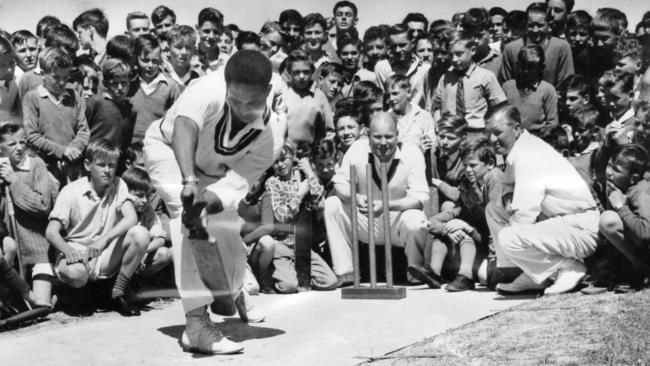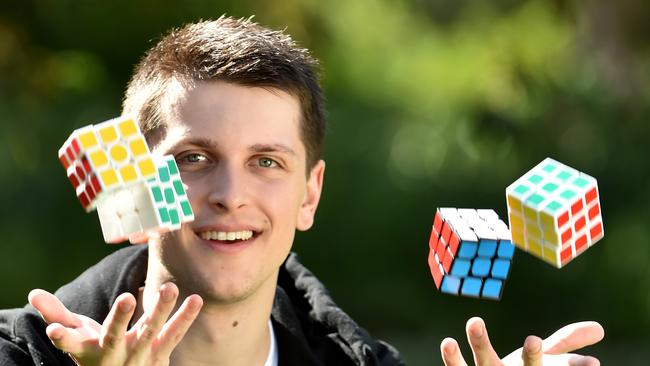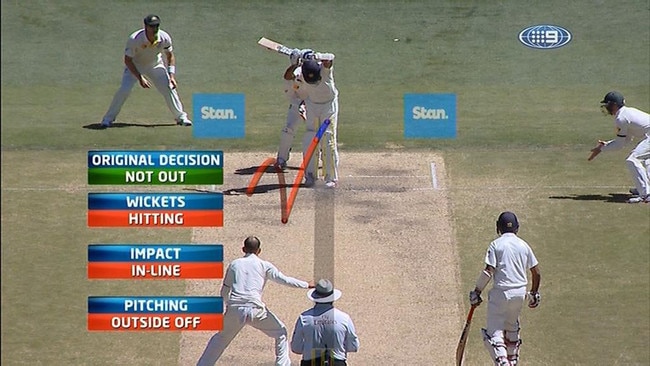
Langer, Starc, McEnroe and Pacquiao are all shining examples of those with a cacky disposition. But who is the greatest leftie ever?
Golfer Phil Mickelson’s nickname is ‘Leftie’ such is his success in a sport that has an institutional bias against left-handers. Golf course architects design their layouts based on the fact that up to 90 per cent of the world’s population is right-hand dominant.
Consequently only four left-handers have ever won a major. Mickelson has won five while America’s Bubba Watson has two, and Canada’s Mike Weir and New Zealand’s Bob Charles have a major each.
Rafael Nadal is probably the answer for most. The Spaniard has 19 grand slam tennis titles, surely he’s the best. But here’s the thing, Rafa isn’t actually left-handed. He just plays tennis that way.

The urban myth goes that uncle Toni, also his coach, forced the naturally right-handed Nadal to go left. In tennis it would seem to be an advantage based on which side of the court you serve to finish a game. Rod Laver, Martina Navratilova and McEnroe are notable lefties but, despite the supposed advantage, there really aren’t many more. It might have come with a little help from Uncle Toni but apparently Nadal decided to favour his left hand of his own volition.
Pacquiao could be the greatest southpaw boxer in history, although many would argue Marvin Hagler was pretty marvellous too.
Babe Ruth is America’s greatest leftie (or is it JFK?) but the sport that seems to be a safe haven for the lefties is cricket.
It is not always so easy to tell true lefties from righties. The aforementioned Langer, Adam Gilchrist, Brian Lara, Alastair Cook, David Gower and Clive Lloyd all signed autographs with their right hand but were left-handed batsmen.
Of Test cricket’s top 10 most prolific runscorers, five batted with their bums facing west: Cook (No 5), Kumar Sangakkara (No 6), Lara (No 7), Shivnarine Chanderpaul (No 8) and Allan Border (No 10).
Only one leftie bowler, Sri Lankan spinner Rangana Herath (No 10), makes the Test bowling Top 10 but the likes of Mitchell Johnson, Starc, Wasim Akram and the great Alan Davidson are all worthy of such status.
In 2000 the West Indies fielded an XI with eight left-handers (Lara wasn’t one them) while Australia peaked at seven in 2013 — David Warner, Ed Cowan, Phillip Hughes, Mike Hussey, Matthew Wade, Johnson and Starc.
That’s a lot to choose from but there’s one leftie who could be considered among both the greatest batsmen and bowlers to ever play the game.
He has the 12th best batting average in Test history at 57.78 runs per innings but could also have been picked to play international cricket as a bowler alone, either as a fast-medium opener or a wrist spinner.
We talk, of course, about Garfield Sobers — AWAAT’s pick as the greatest left-handed athlete of any sport in history (FYI: you’ll never find a polo player who uses his left hand. Why? It’s banned for safety reasons — head-on collisions being something of a threat in a game where you wield a giant mallet while trying to ride a horse).
True cube champion
AWAAT’s standard bearer for Aussie sportsmanship has always been tennis great Pat Rafter. When he lost a heartbreaking 2001 Wimbledon final to Croatian Goran Ivanisevic (another handy leftie) 9-7 in the fifth set, we crumbled that Monday (yes, it was a Monday) and may have even gotten a little misty-eyed. A smiling Rafter gave Goran a big hug and said: “Well, done, mate.”
Unbelievable.
Well, we’ve found someone even better.
Netflix has just dropped a quirky little 40-minute documentary called The Speed Cubers which follows the lives of history’s two greatest exponents of the Rubik’s cube.

We’ve never solved a Rubik’s cube but there are human beings out there who can solve one in under four seconds.
It’s an actual sport, with world championships and everything. And the closet thing speed cubing has to a Don Bradman/Michael Jordan/Wayne Gretzky is Aussie Feliks Zemdegs.
Feliks, now 24, is the only person to win the World Cube Association World Championships twice. He can even crack a cube blindfolded.
If, for a minute, you can imagine Bradman discovering there was somebody just as good, even better than him, and going out of his way to encourage his talent then you’d have Zemdegs.
The Speed Cubers tells us that Max Park, an Asian-American kid with severe autism, has knocked off most of Zemdegs’ world records but the first person to congratulate him is Zemdegs. More than that, he has become his mentor, teaching him how to handle success and failure.
AWAAT challenges you to watch the documentary without getting a little emotional when the interviewer asks Feliks — who has wisely been hired by an Aussie finance firm — how it has felt supporting his greatest rival while watching all his world records get erased from history.
Stats back up the umps
Research released this week out of the Queensland University of Technology reveals that cricket umpires are bloody good at judging LBW decisions.
Based on data supplied by Cricket Australia which looked at four-day, one-day and T20 games, umpires get it right most of the time, even though they tend to err to the conservative “not out” decision when in doubt. But the data showed there is a skew, depending on the format. The shorter the game, the more likely an umpire will make an incorrect LBW decision.

Joshua Adie, a PhD candidate in QUT’s School of Exercise & Nutrition Sciences, has just published a new paper highlighting research conducted in partnership with Cricket Australia.
“Interestingly, we found that umpires’ decision-making behaviour changed between match types,” Adie says. “Viewing the data from Cricket Australia, we found that, overall, umpires’ decisions were rated as correct an impressive 98.08 per cent of the time. However, in T20 matches, they had a hit rate of 86.15 per cent compared to 96.20 per cent in four-day matches.
“This meant that umpires were biased to say ‘not out’, especially in T20.
“It could be that the significantly larger crowds and TV audiences in T20 cricket compared to four-day matches are putting more pressure on umpires to give the batter the ‘benefit of the doubt’ and if that’s the case then future studies could explore their influence in sports officiating.
“Another possibility is that because T20 cricket is heavily focused on entertainment in the form of explosive batting performances, umpires are being unconsciously more conservative for the sake of continuing entertainment, resulting in more ‘miss’ errors.”
Whatever the reason, it backs up what we’ve been thinking for a while.
BC’s Tip of the Week
He tipped you into Eduardo, winner of last Saturday’s Missile Stakes, and now Brendan Cormick is leaning towards Acting, No 3 in Race 3 at Caulfield on Saturday, still sitting at $6 with the TAB on Friday afternoon.
“Had a gut-busting run first-up last preparation on a firm track that ruined her for the campaign,” Brendan says.
“Doesn’t appear to face much pressure through the early and middle stages and will enjoy the soft going. Looking for jockey Damien Oliver to be nominated for the best supporting role.”
mcloughlins@theaustralian.com.au




What do Justin Langer, Mitchell Starc, John McEnroe and Manny Pacquiao have in common? They all probably fell over themselves telling everyone that Thursday was World Left Handers Day.